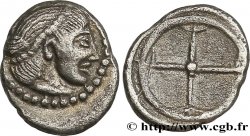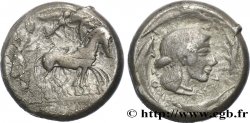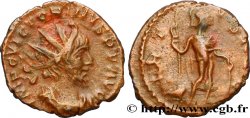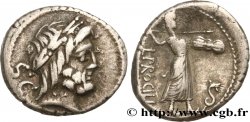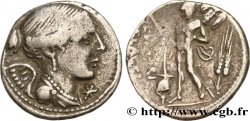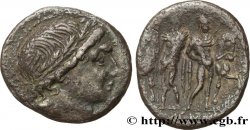v36_0048 - SICILIA - SIRACUSA Tétradrachme
MONNAIES 36 (2008)
Начальная цена : 1 800.00 €
Назначить цену : 2 800.00 €
непроданный лот
Начальная цена : 1 800.00 €
Назначить цену : 2 800.00 €
непроданный лот
Тип Tétradrachme
Дата: c. 480/78-475 AC
Монетный двор / Город: Syracusa
Металл: silver
Диаметр: 26,5 mm
Ориентация осей монеты: 11 h.
Вес: 17,19 g.
Редкость: R2
Emission: groupe 3, 8b/11
Комментарии о состоянии
Exemplaire sur un flan large parfaitement centré. Portrait de qualité exceptionnelle
Ссылки в каталоге: :
Происхождение:
Cet exemplaire provient de MONNAIES IV, n° 16
Лицевая сторона
Аверс: легенда: ANÉPIGRAPHE.
Аверс: описание: Bige au pas à droite, conduit par un aurige, tenant les rênes et le kentron ; le bige est couronné par Niké volant à droite.
Обратная сторона
Реверс: Описание: Tête d'Aréthuse à droite, les cheveux relevés et retenus par un diadème de perles, entourée de quatre dauphins.
Реверс: легенда: SURAK-OSI-O-N
Комментарий
Mêmes coins que l’exemplaire du musée de Copenhague (Cop. 622) et que l’exemplaire de la collection de l’American Numismatic Society (ANS. 38).
Same dies as the Copenhagen Museum copy (Cop. 622) and the copy from the American Numismatic Society collection (ANS. 38)
Same dies as the Copenhagen Museum copy (Cop. 622) and the copy from the American Numismatic Society collection (ANS. 38)







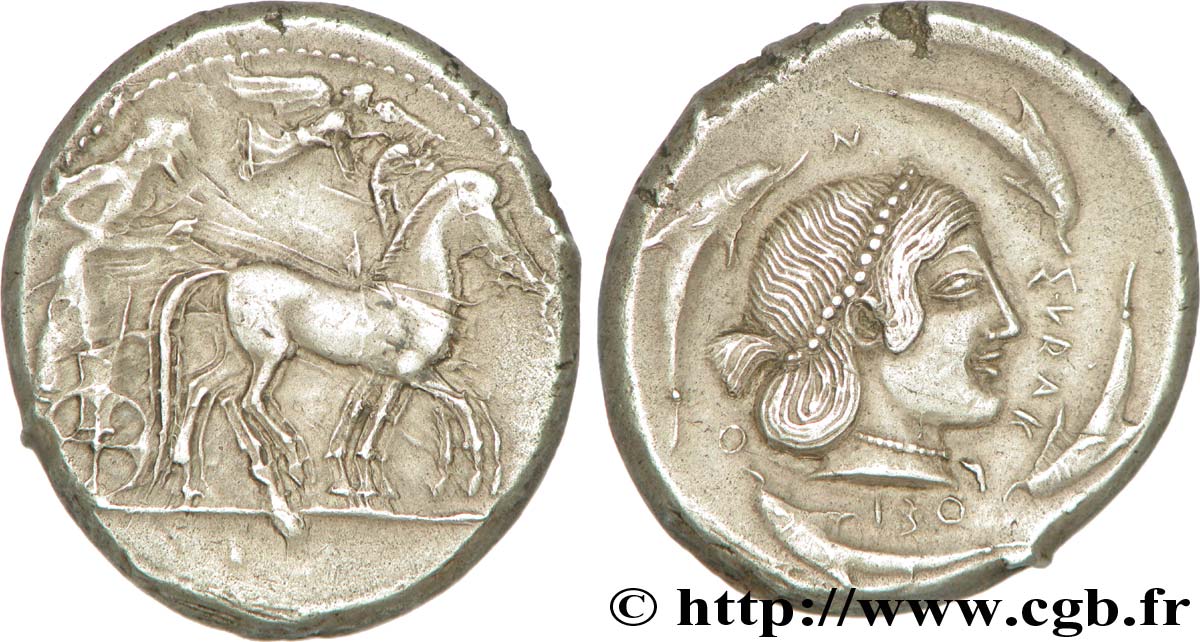
 Cообщить об ошибке
Cообщить об ошибке Распечатать страницу
Распечатать страницу Отправить мой выбор
Отправить мой выбор Задать вопрос
Задать вопрос Consign / sell
Consign / sell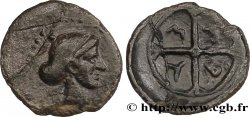
 Информация
Информация
